Author Photo And Bio
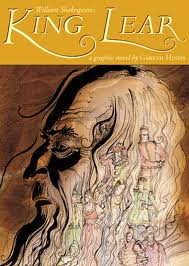 1. King Lear by William Shakespeare (1605). Considered one of Shakespeare’s four “core tragedies”—with Hamlet, Othello, and Macbeth —King Lear commences with Lear, having achieved great age but little wisdom, dividing his kingdom among his three daughters in return for their proclamations of love for him. Two of his daughters, evil to the core, falsely profess their love, while Cordelia, his good and true daughter, refuses his request. Enraged, Lear gives his kingdom to his evil daughters and banishes Cordelia. Lear pays a dear price for this rash act. The play systematically strips him of his kingdom, title, retainers, clothes, and sanity in a process so cruel and unrelenting as to be nearly unendurable.
1. King Lear by William Shakespeare (1605). Considered one of Shakespeare’s four “core tragedies”—with Hamlet, Othello, and Macbeth —King Lear commences with Lear, having achieved great age but little wisdom, dividing his kingdom among his three daughters in return for their proclamations of love for him. Two of his daughters, evil to the core, falsely profess their love, while Cordelia, his good and true daughter, refuses his request. Enraged, Lear gives his kingdom to his evil daughters and banishes Cordelia. Lear pays a dear price for this rash act. The play systematically strips him of his kingdom, title, retainers, clothes, and sanity in a process so cruel and unrelenting as to be nearly unendurable.
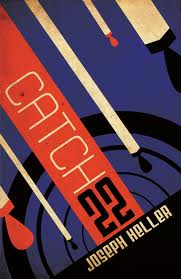 2. Catch-22 by Joseph Heller (1962). After flying forty-eight missions, Yossarian, a bomber pilot in World War II, is going crazy trying to find an excuse to be grounded. But the military has a catch, Catch 22, which states, (a) a sane man must fight, unless (b) he can prove he is insane, in which case (a) must apply —for what sane person doesn’t want to avoid fighting? This novel is a congery of appallingly funny, logical, logistical, and mortal horrors. It defined the cultural moment of the 1960s, when black humor became America’s pop idiom.
2. Catch-22 by Joseph Heller (1962). After flying forty-eight missions, Yossarian, a bomber pilot in World War II, is going crazy trying to find an excuse to be grounded. But the military has a catch, Catch 22, which states, (a) a sane man must fight, unless (b) he can prove he is insane, in which case (a) must apply —for what sane person doesn’t want to avoid fighting? This novel is a congery of appallingly funny, logical, logistical, and mortal horrors. It defined the cultural moment of the 1960s, when black humor became America’s pop idiom.
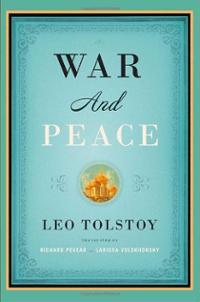 3. War and Peace by Leo Tolstoy (1869). Mark Twain supposedly said of this masterpiece, “Tolstoy carelessly neglects to include a boat race.” Everything else is included in this epic novel that revolves around Napoleon’s invasion of Russia in 1812. Tolstoy is as adept at drawing panoramic battle scenes as he is at describing individual feeling in hundreds of characters from all strata of society, but it is his depiction of Prince Andrey, Natasha, and Pierre —who struggle with love and with finding the right way to live —that makes this book beloved.
3. War and Peace by Leo Tolstoy (1869). Mark Twain supposedly said of this masterpiece, “Tolstoy carelessly neglects to include a boat race.” Everything else is included in this epic novel that revolves around Napoleon’s invasion of Russia in 1812. Tolstoy is as adept at drawing panoramic battle scenes as he is at describing individual feeling in hundreds of characters from all strata of society, but it is his depiction of Prince Andrey, Natasha, and Pierre —who struggle with love and with finding the right way to live —that makes this book beloved.
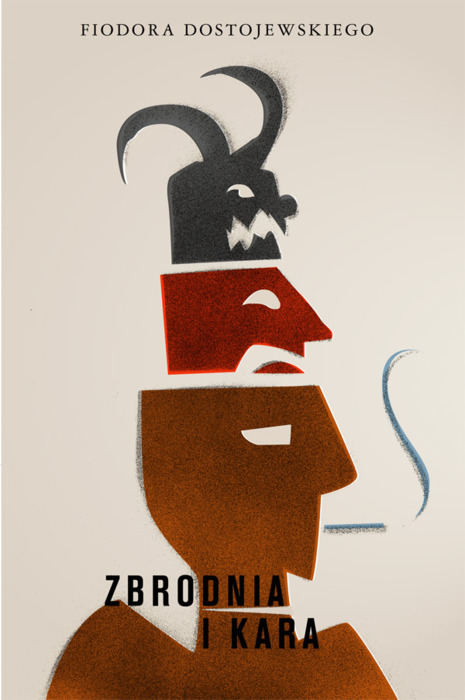 4. Crime and Punishment by Fyodor Dostoevsky (1866). In the peak heat of a St. Petersburg summer, an erstwhile university student, Raskolnikov, commits literature’s most famous fictional crime, bludgeoning a pawnbroker and her sister with an axe. What follows is a psychological chess match between Raskolnikov and a wily detective that moves toward a form of redemption for our antihero. Relentlessly philosophical and psychological, Crime and Punishment tackles freedom and strength, suffering and madness, illness and fate, and the pressures of the modern urban world on the soul, while asking if “great men” have license to forge their own moral codes.
4. Crime and Punishment by Fyodor Dostoevsky (1866). In the peak heat of a St. Petersburg summer, an erstwhile university student, Raskolnikov, commits literature’s most famous fictional crime, bludgeoning a pawnbroker and her sister with an axe. What follows is a psychological chess match between Raskolnikov and a wily detective that moves toward a form of redemption for our antihero. Relentlessly philosophical and psychological, Crime and Punishment tackles freedom and strength, suffering and madness, illness and fate, and the pressures of the modern urban world on the soul, while asking if “great men” have license to forge their own moral codes.
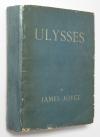 5. Ulysses by James Joyce (1922). Filled with convoluted plotting, scrambled syntax, puns, neologisms, and arcane mythological allusions, Ulysses recounts the misadventures of schlubby Dublin advertising salesman Leopold Bloom on a single day, June 16, 1904. As Everyman Bloom and a host of other characters act out, on a banal and quotidian scale, the major episodes of Homer’s Odyssey —including encounters with modern-day sirens and a Cyclops —Joyce’s bawdy mock-epic suggests the improbability, perhaps even the pointlessness, of heroism in the modern age.
5. Ulysses by James Joyce (1922). Filled with convoluted plotting, scrambled syntax, puns, neologisms, and arcane mythological allusions, Ulysses recounts the misadventures of schlubby Dublin advertising salesman Leopold Bloom on a single day, June 16, 1904. As Everyman Bloom and a host of other characters act out, on a banal and quotidian scale, the major episodes of Homer’s Odyssey —including encounters with modern-day sirens and a Cyclops —Joyce’s bawdy mock-epic suggests the improbability, perhaps even the pointlessness, of heroism in the modern age.
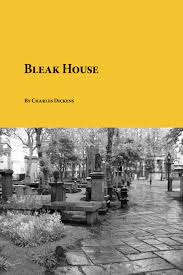 6. Bleak House by Charles Dickens (1853). Dickens is best known for his immense plots that trace every corner of Victorian society, and Bleak House fulfills that expectation to perfection. The plot braids the sentimental tale of an orphan unaware of her scandalous parentage with an ironic and bitterly funny satire of a lawsuit that appears to entail all of London. In doing so, the novel encompasses more than any other Dickens novel, shows the author’s mature skills, and is the only Victorian novel to include an incident of human spontaneous combustion.
6. Bleak House by Charles Dickens (1853). Dickens is best known for his immense plots that trace every corner of Victorian society, and Bleak House fulfills that expectation to perfection. The plot braids the sentimental tale of an orphan unaware of her scandalous parentage with an ironic and bitterly funny satire of a lawsuit that appears to entail all of London. In doing so, the novel encompasses more than any other Dickens novel, shows the author’s mature skills, and is the only Victorian novel to include an incident of human spontaneous combustion.
 7. The Strange Case of Dr. Jekyll and Mr. Hyde by Robert Louis Stevenson (1886). This novel might easily have become a victim of its own surpassing fame, which has removed all suspense from its central riddle: What is the relationship between Dr. Jekyll and Mr. Hyde? Yet as our narrator plumbs Dr. Jekyll’s descent into drug-addled, alter-ego madness, we are riveted by Stevenson’s portrait of the good and evil that lurks in one man’s heart. “This, too, was myself,” Jekyll says of Hyde. Somehow we suspect it’s us, too.
7. The Strange Case of Dr. Jekyll and Mr. Hyde by Robert Louis Stevenson (1886). This novel might easily have become a victim of its own surpassing fame, which has removed all suspense from its central riddle: What is the relationship between Dr. Jekyll and Mr. Hyde? Yet as our narrator plumbs Dr. Jekyll’s descent into drug-addled, alter-ego madness, we are riveted by Stevenson’s portrait of the good and evil that lurks in one man’s heart. “This, too, was myself,” Jekyll says of Hyde. Somehow we suspect it’s us, too.
 8. 1984 by George Orwell (1948). Orwell’s reputation as an antiauthoritarian arises in large part from this novel set in a totalitarian future in which citizens are constantly reminded “Big Brother is watching” as they are spied upon by the Thought Police and one another. In this landscape, Winston Smith is a man in danger simply because his memory works. He understands that the Party’s total control of its citizens is based on its ability to control its message and its citizens’ memories, and he is slowly drawn into a dangerous love affair and then an alliance, called the Brotherhood, of men and women united to fight Big Brother. Some of the vocabulary Orwell created for 1984—newspeak, doublethink, Big Brother —have become part of today’s vocabulary.
8. 1984 by George Orwell (1948). Orwell’s reputation as an antiauthoritarian arises in large part from this novel set in a totalitarian future in which citizens are constantly reminded “Big Brother is watching” as they are spied upon by the Thought Police and one another. In this landscape, Winston Smith is a man in danger simply because his memory works. He understands that the Party’s total control of its citizens is based on its ability to control its message and its citizens’ memories, and he is slowly drawn into a dangerous love affair and then an alliance, called the Brotherhood, of men and women united to fight Big Brother. Some of the vocabulary Orwell created for 1984—newspeak, doublethink, Big Brother —have become part of today’s vocabulary.
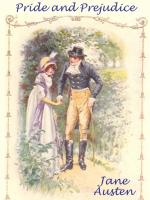 9. Pride and Prejudice by Jane Austen (1813). “It is a truth universally acknowledged, that a single man in possession of a good fortune must be in want of a wife,” reads this novel’s famous opening line. This matching of wife to single man —or good fortune —makes up the plot of perhaps the happiest, smartest romance ever written. Austen’s genius was to make Elizabeth Bennet a reluctant, sometimes crabby equal to her Mr. Darcy, making Pride and Prejudice as much a battle of wits as it is a love story.
9. Pride and Prejudice by Jane Austen (1813). “It is a truth universally acknowledged, that a single man in possession of a good fortune must be in want of a wife,” reads this novel’s famous opening line. This matching of wife to single man —or good fortune —makes up the plot of perhaps the happiest, smartest romance ever written. Austen’s genius was to make Elizabeth Bennet a reluctant, sometimes crabby equal to her Mr. Darcy, making Pride and Prejudice as much a battle of wits as it is a love story.
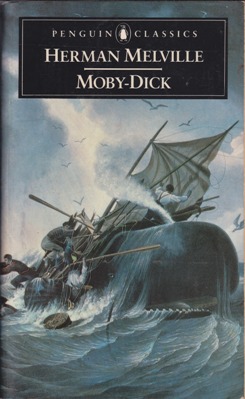 10. Moby-Dick by Herman Melville (1851). This sweeping saga of obsession, vanity, and vengeance at sea can be read as a harrowing parable, a gripping adventure story, or a semiscientific chronicle of the whaling industry. No matter, the book rewards patient readers with some of fiction’s most memorable characters, from mad Captain Ahab to the titular white whale that crippled him, from the honorable pagan Queequeg to our insightful narrator/surrogate (“Call me”) Ishmael, to that hell-bent vessel itself, the Pequod.
10. Moby-Dick by Herman Melville (1851). This sweeping saga of obsession, vanity, and vengeance at sea can be read as a harrowing parable, a gripping adventure story, or a semiscientific chronicle of the whaling industry. No matter, the book rewards patient readers with some of fiction’s most memorable characters, from mad Captain Ahab to the titular white whale that crippled him, from the honorable pagan Queequeg to our insightful narrator/surrogate (“Call me”) Ishmael, to that hell-bent vessel itself, the Pequod.